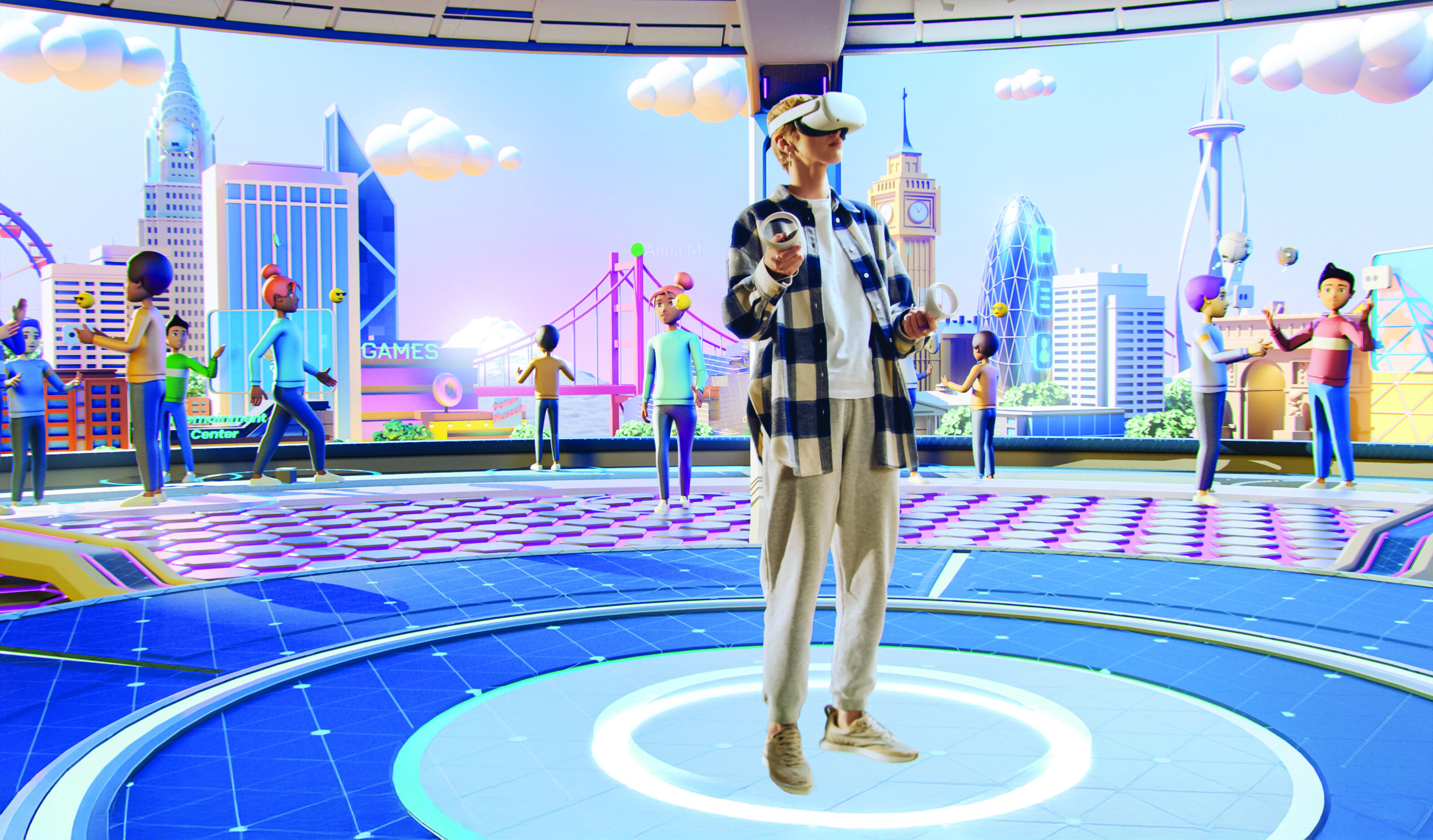
 By David Wright and Karlien Kriegler
By David Wright and Karlien Kriegler
Co-Founders
Hello Ara
United Kingdom, South Africa
david@helloara.io
karlien@helloara.io
When Facebook rebranded as Meta in late 2021 and committed billions to immersive technology, it signaled a shift in the way people could experience the internet. Why message your friends on WhatsApp when you can hang out with them in a virtual games parlor? My Hello Ara cofounder, Karlien Kriegler, and I saw this as a good time to explore how immersive environments could be leveraged for market research because Meta had the financial means to bring immersive technology to the masses. Yes, virtual reality (VR) has already been long used in market research, primarily for shelf tests. However, these projects were prohibitively expensive, and only a few large clients used them.
“Immersive environments” are digital virtual spaces (both 2D and 3D) that allow participants to socialize and play games in controlled, yet imaginative, online visual contexts. Unlike with Zoom calls, where participants are trapped in static boxes, these spaces let people hang out, move, explore, and create within interesting and dynamic environments. It could be an entire world; it could be a shopping mall; it could be a magical ice cream parlor. For research, it could be any context that naturally applies to a brand, for instance, an imaginative Lego factory. While it’s not quite the same 360-degree sensory experience as virtual reality, participants do not need expensive and bulky VR headsets.
Because of Meta’s interest in immersive environments, there has been an explosion in the creation of tools and platforms that can help us take part as consumers and as creators. It is now very affordable to create customer- immersive experiences due to “no-code world builders,” generative AI libraries that create 3D objects, and expanding marketplaces for 3D assets. Because of the availability of these tools that help us craft virtual spaces, hundreds of brands are adding immersive experiences to their marketing toolbox. For example, Walmart Discovered has tens of millions of visitors on Roblox, a popular virtual universe for playing and creating games. The reasons brands are being drawn to immersive experiences like Roblox, Fortnite, and others are that they offer a powerful way to reach Gen Z and Gen Alpha, where they spend time, create deep and playful engagement far beyond traditional ads, and build lasting brand affinity through fun, interactive storytelling. These platforms also deliver valuable insights, open up new revenue streams through virtual goods, and help future-proof brands by making them part of youth culture.
In this article, we’ll explore three case studies showing how digital immersive research has evolved into a practical, scalable methodology.
With these case studies, we’ll demonstrate:
– How environmental design affects responses
– How these spaces overcome “Zoom fatigue”
– How platforms like Roblox provide unique access to younger demographics
Our Core Argument: Properly designed immersive research fundamentally changes participant interaction, yielding deeper insights than traditional methods by creating psychological safety that encourages authentic behavior and creative collaboration.
The Overarching Merits of Virtual Immersive
Traditional research methods often struggle to fully capture the depth of human emotions and decision-making processes because the actual research, via a survey form or a video call, is far removed from the actual brand moment that we want to understand. In contrast, immersive environments allow participants to step into the actual context we are researching and then share their thoughts and behaviors in the right context.
Immersion Can Reshape Cognition and Emotional Response
Immersion isn’t just about engagement—it transforms. When individuals are placed in a fully immersive world, their attention is heightened, their interactions feel more authentic, and their behavior becomes more reflective of real-life decision-making.
The impact of immersion has been explored across storytelling, gaming, and digital experiences, reinforcing how deeply people connect with these virtual spaces. As Frank Rose, author of The Art of Immersion: How the Digital Generation Is Remaking Hollywood, Madison Avenue, and the Way We Tell Stories, explains: “Immersion is the experience of losing oneself in a fictional world. It’s what happens when people are not merely informed or entertained but slip into a manufactured reality. J.R.R. Tolkien, who created one of the most immersive tales of all time in his Lord of the Rings trilogy, described it as ‘the enchanted state.’”
Nixing the VR Headset
When the Oculus Quest 2 launched to great fanfare, we purchased two headsets at $500 each. Our first experience was an “Alice in Wonderland” surreal moment, as we were transported into a fantastic new world. We also noticed the intensity of immersion; after just 30 minutes, we found ourselves breaking into a light sweat, fully absorbed in the experience. So theoretically, we reasoned, this would also mean a respondent would be giving the research all their attention and wouldn’t be scrolling social media feeds while on a qualitative call.
We also recognized that the potential of immersive environments extended beyond simple shelf tests. Instead, it was about designing imaginative, contextually relevant experiences, like transporting respondents to a virtual ice cream shop for a brand study.
However, we also realized that VR headsets didn’t scale, as very few people in our target markets had them due to cost, and usage outside of the U.S. was niche. We also didn’t want to bring people into centralized locations, as this defeated the possibility of technology at scale.
We concluded, like many others in the industry, that you don’t need a VR headset to participate in the immersive research. Instead, researchers could take their research to the existing and rapidly growing immersive social gaming platforms, like Roblox or Minecraft, that millions of people use every day.
So, this is where we turned our attention.
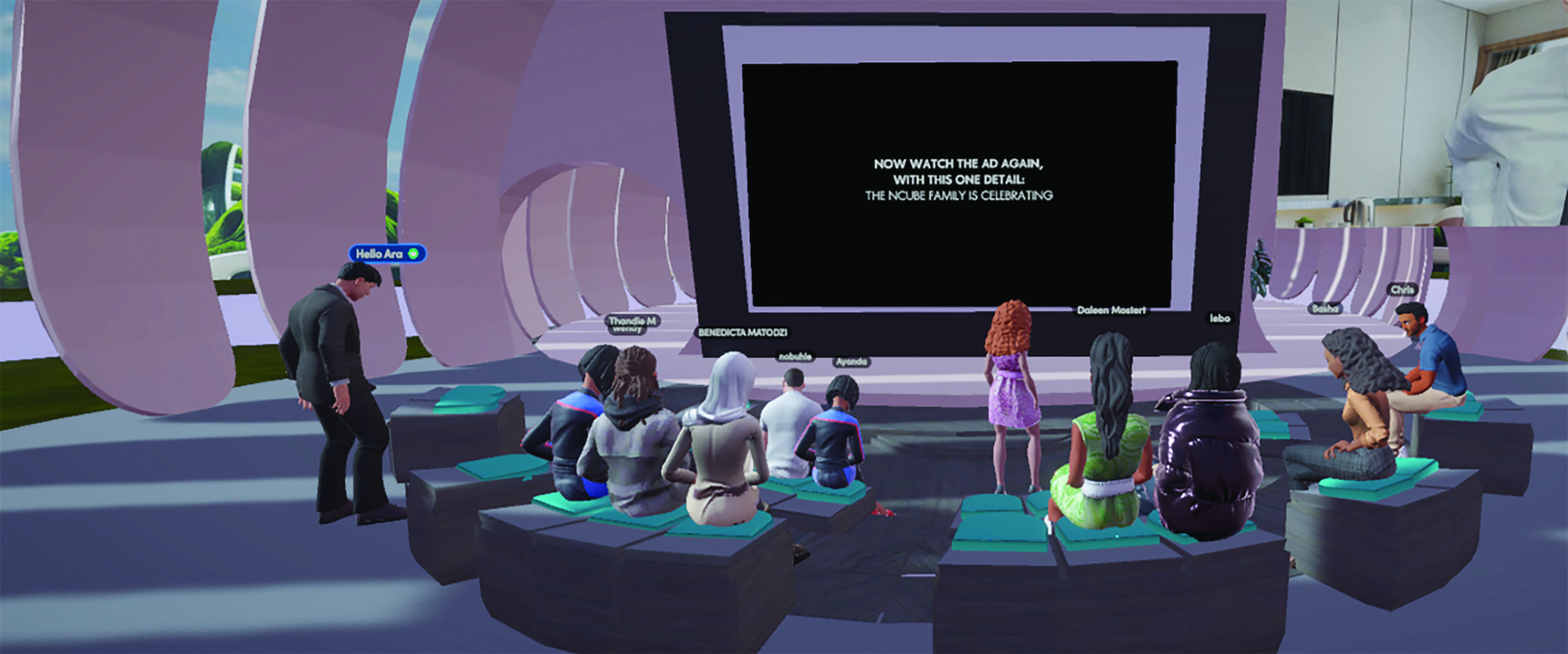
Building Our First Immersive Research Space
We dismissed stock standard immersive environments because they were not suited to research. We’re talking about popular platforms like Meta Horizon Worlds, VR Chat, public Roblox experiences, Fortnite Creative, and Minecraft, which have existing pre-built spaces. These spaces are complex to navigate as they are large and designed to host large groups of people. A small focus group feels dwarfed by these spaces.
So, two years ago, we decided to build our own “Immersive Lab” based on the learnings of our initial research experiments using unmodified environments—like those we just mentioned.
We wanted the environment to be smaller, with intimate seating areas (designed for up to eight respondents and two moderators), lots of display walls (for ads and concepts), and a small auditorium with a large display screen where a moderator can engage with respondents. We worked with a 3D designer to make the space visually interesting and used generative AI to visualize some of the design ideas we had, which greatly helped the designer. We wanted a practical research environment—one that was functional but also had a gaming environment-inspired “wow factor.”
Since building this custom environment, we have conducted hundreds of focus groups. For us, immersive research has not been a one-off novelty. We currently run immersive research in a traditional manner with a moderator, research script, and often a staff member who helps respondents with technical aspects like microphone settings, avatar customization, and environment navigation. Like a traditional study, we show respondents images or media for discussion, with participants communicating via microphone.
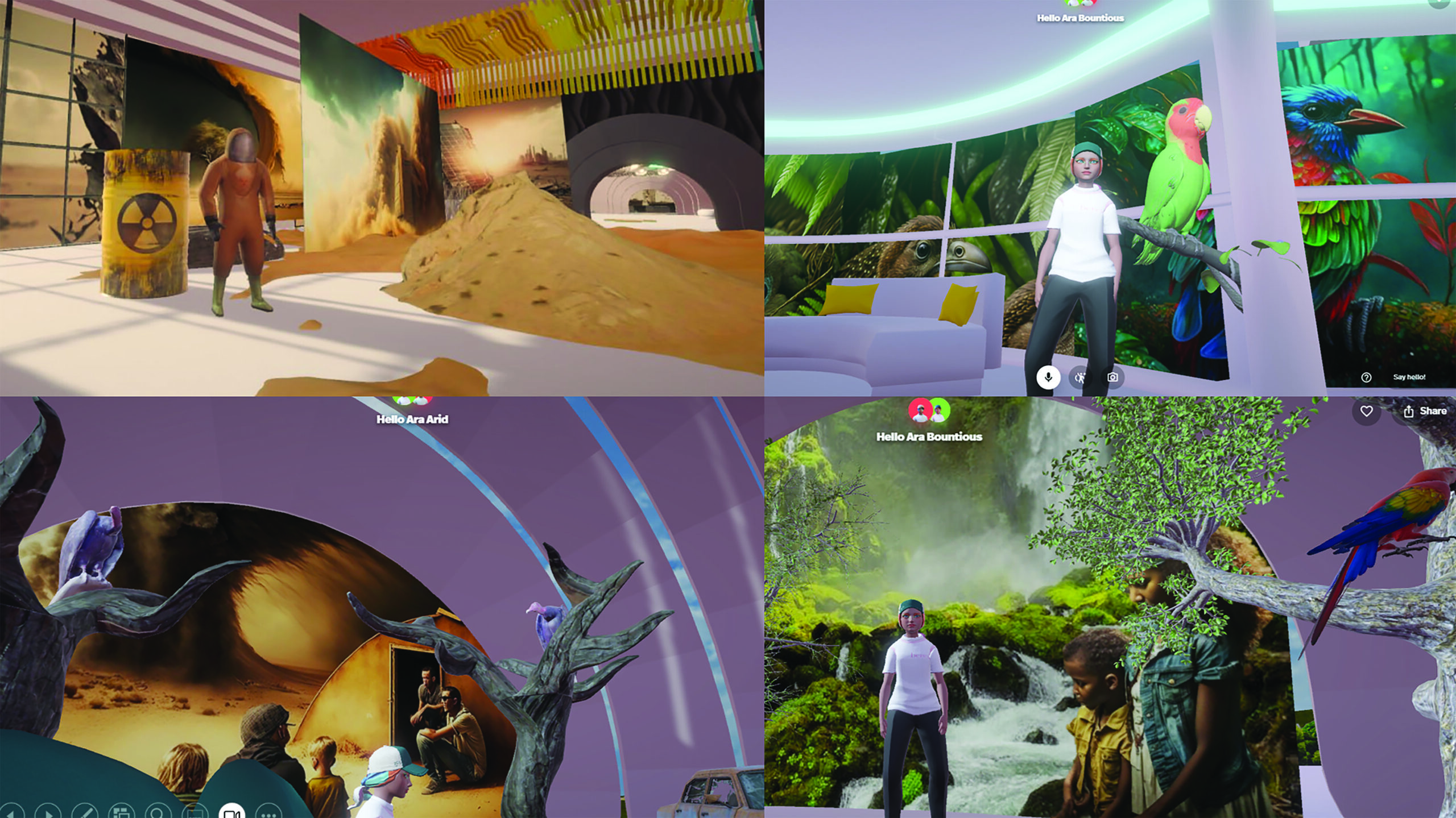
Case Study 1: Curiouser and Curiouser—the Impact of Immersive Environments on the Research Process
For this immersive gaming environments experiment using our Immersive Lab, we collaborated with a client interested in leveraging virtual qualitative groups to deeply explore shopper perspectives on sustainability. Additionally, we aimed to investigate how immersive virtual environments influence participants’ engagement and the overall research outcomes. We designed two distinct immersive lab environments:
– Bounteous: An inviting, vibrant space filled with lush trees, singing birds, and rich biodiversity.
– Arid: A starkly contrasting setting, representing environmental degradation with sand, scorched solar panels, desert storms, visible plastic pollution, and a character clad in a Hazmat suit welcoming participants into the unsettling atmosphere.
We found that environmental context significantly shapes participant attitudes and behaviors.
- Arid Environment: Participants felt defensive, stressed, and individually burdened. Discussions gravitated toward personal responsibility, yet participants struggled to collaborate effectively on sustainability solutions. Key emotional responses included despair, frustration, scarcity, and defensiveness. “It was really immersive. It makes you confront the issue and bring it to the front of your mind,” one participant reflected.
- Bounteous Environment: Participants felt relaxed, engaged, and collaborative. Conversations naturally evolved into deeper discussions, enabling teamwork and collective ideation. Central themes included collaborative responsibility, circular economy concepts, sustainable practices, recycling, refurbishing, and environmentally friendly packaging. One participant noted, “If this was a Zoom call, I would be asleep by now, but now I am interested and don’t want to leave.”
From these groups, we also concluded that immersive research is a great way to combat Zoom fatigue, as described by Professor Jeremy Bailenson, director of the Stanford Virtual Human Interaction Lab, Search Engine Journal. He found that:
- Excessive amounts of close-up eye contact can cause social anxiety.
- Seeing yourself during video chats constantly in real-time is unnatural and fatiguing.
- The cognitive load is high in video chat. Body language is much harder to interpret.
- Zoom calls unnaturally reduce peoples’ mobility by forcing them to stay within a field of view.
To support this kind of impact, several design principles can be integrated into the practice:
- Begin with expansive spaces for initial exploration and orientation, transitioning gradually into focused, smaller-group interactions.
- Thoughtfully integrate art and virtual objects aligned with research goals to maintain engagement without causing distraction.
- Encourage avatar customization to promote participant comfort and authentic self-expression, enhancing openness and depth in discussions.
 Case Study 2: Collaborative Testing Retail Technology Concepts in an Immersive Gaming Environment
Case Study 2: Collaborative Testing Retail Technology Concepts in an Immersive Gaming Environment
To test new digital retail experiences, we built a full-scale replica of the clients’ flagship beauty department in our Immersive Lab. Using actual store plans from their Canal Walk location in Cape Town, we created a digital twin and placed it inside our warehouse-styled immersive gaming environment, nicknamed the “Giga Factory.” This immersive environment allowed participants to interact with three different assistance innovations: an AI-driven beauty assistant (Clara), digital recommendation screens for product discovery, and virtual avatar beauty advisors, which were controlled by real people with beauty expertise, within a store replica, without the cost and logistics of physical store modifications.
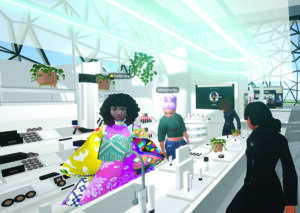
A key finding was that participants reported feeling more comfortable asking questions to AI beauty assistants compared to in-store human consultants. While we didn’t run direct comparison tests, our qualitative discussions revealed that participants valued the AI’s perceived nonjudgmental nature and extensive product knowledge. One participant stated, “AI doesn’t judge, you can ask anything without feeling self-conscious.” Many women, particularly those with sensitive skin concerns or budget constraints, described feeling self-conscious when asking human beauty consultants certain questions in physical stores.
Overall, this research demonstrated how immersive gaming environment-based testing reduces costs compared to physical store mock-ups (which would have required construction, staffing, and participant travel), accelerates innovation cycles by allowing multiple concepts to be tested simultaneously, and drives more customer-centric retail strategies by involving consumers earlier in the design process. The study helped the client prioritize which digital assistance tools to implement first, with the digital recommendation screens being selected for initial rollout due to their ease of implementation and high consumer acceptance.
Case Study 3: Gen Z in Roblox
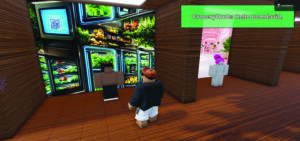
To explore how Gen Z envisions the future of retail and their growing influence on household purchases, we built a customized research environment within Roblox. Roblox is an online platform where users, primarily children and teenagers, create and play games across various genres, with over 400 million monthly active users. Twenty-four percent of Roblox users are in the 17–24 age group. This was our first Roblox development, and as our research focused on Gen Z, we decided it was a natural fit for immersive research, as the development enabled us to bring the research to where they already are.
Roblox offers a robust suite of development tools within its platform, Roblox Studio, making it possible to create affordable interactive experiences and games.
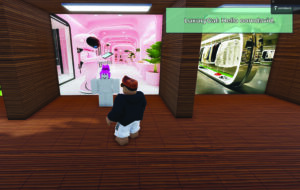
A key feature within Roblox is the ability to create non-playable characters (NPCs). NPCs are in-game characters not controlled by human players; instead, they are programmed to interact with players through predetermined scripts, behaviors, or AI-driven responses. Typically, NPCs in Roblox are used to guide players through game tutorials, provide quests or missions, act as in-game vendors, or simply populate the environment to enhance realism and immersion.
In our research context, we’ve leveraged Roblox’s built-in tools to develop AI-driven NPCs specifically for conducting interactive interviews within the Roblox environment. By integrating AI-powered conversational surveys with NPCs, we’ve transformed these virtual characters into dynamic research agents.
The space we built featured a carefully designed environment divided into two distinct sections: one anchored in the present, showcasing traditional South African homes and familiar retail brands, and another, a futuristic retail landscape characterized by sci-fi-inspired spiral buildings, drones, solar panel roads, mobile fashion stores, and AI-driven shopping assistants. This strategic design choice was intentional, enabling participants to experience a tangible journey from their current reality into a speculative future.
We introduced conversational AI NPCs specifically trained as interactive “coaches” rather than characters reading out a survey script. Each NPC was assigned to a different retail category (groceries, luxury, technology, fashion, etc.) and tasked with stimulating rich, thoughtful conversations by asking participants targeted questions about their expectations and desires for the future of shopping. These AI interactions supplemented human moderation, providing a hybrid approach that combined real-time conversational coaching with the depth and nuance of traditional human-led qualitative research.
The study highlighted that Gen Z participants strongly prefer practical AI-driven solutions that address real-world issues rather than technology introduced merely for novelty. They expressed significant enthusiasm for AI-powered shopping assistants designed explicitly to help manage rising living costs, simplify budgeting decisions (e.g., “Hey AI, I have this much money—what should I buy?”), and enhance personalization and omnichannel convenience. Crucially, participants emphasized the importance of maintaining a clear balance between efficient AI solutions and authentic human interactions. They acknowledged a genuine risk of becoming overly reliant on AI, expressing a preference for brands to thoughtfully blend AI efficiency with meaningful human experiences to ensure sustained authenticity and ethical usage.
Participants from both South Africa and the U.K. found the immersive research environment significantly more engaging and thought-provoking than traditional digital methods like Zoom interviews or conventional focus groups. They specifically noted that the interactive, visually stimulating setting encouraged deeper thinking and more genuine responses. Participant feedback indicated that the AI NPCs effectively helped structure their thoughts and inspired creativity without overshadowing the human element. Comments such as “The AI NPC was like a personal assistant. It helped me organize my thoughts and gave me ideas,” and “Much more fun than a Zoom call—can meetings be like this in real life?” underscored the effectiveness and appeal of this hybrid approach.
For the client, this innovative methodology provided concrete, actionable insights into how Gen Z perceives the integration of AI in retail. The findings clearly indicated that successful AI applications in retail must directly address Gen Z’s immediate and practical needs around budget management, product accessibility, health considerations, and ethical sustainability. The immersive approach enabled a nuanced understanding of how AI can enhance shopping convenience and personalization while preserving the clients’ premium brand identity and human-centric values.
What Next— Into the Future
Immersive research, beyond shelf test, is still very niche, and currently, the market research industry is more focused on generative AI and its impact.
The creation of immersive spaces requires effort and expertise, so there is an adoption curve to make it work, often for respondents as well. That said, we hope the examples above at least illuminate its potential.
Looking ahead, we see AI playing a key role in lowering barriers to entry. As tools become more advanced and accessible, the creation of immersive worlds will become faster, easier, and more collaborative, opening the door to rich co-creation opportunities and deeper participant engagement.

